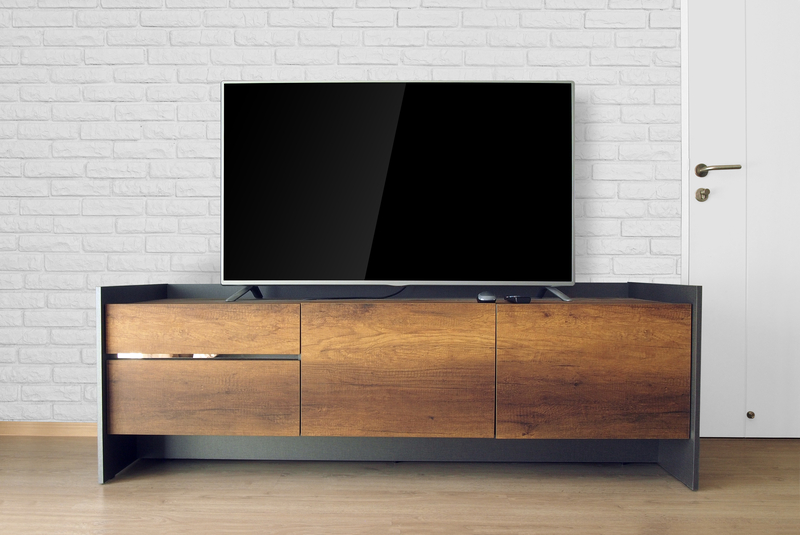Expert Tips for Piano Transportation and Why You Should Call the Pros
Moving a piano isn't just about muscle--it demands precision, experience, and the right approach to preserve both your instrument and your peace of mind. Whether you own a classic baby grand, a hefty upright, or even a grand concert piano, transporting such a treasured instrument is a complex task. In this guide, we'll share expert tips for piano transportation and break down why hiring professional piano movers can make all the difference for your instrument and your home.
Why Piano Transportation Is Different from Moving Regular Furniture
Pianos aren't just heavy; they're exceptionally sensitive instruments. A typical upright can weigh between 300 and 500 pounds, while grand pianos can surpass 1,200 pounds. But it isn't simply about weight. Internally, pianos have thousands of delicate parts--strings, hammers, pedals, and the soundboard--that can be easily damaged if mishandled. That's why understanding the intricacies of piano relocation is essential for both amateur and professional movers.
- Pianos have uneven weight distribution--making them wobbly and difficult to balance.
- Fragile inner mechanisms can shift or break during transit.
- Exterior finishes are prone to scratches, dents, or chips without proper padding and care.
- Improper handling can not only damage your instrument but your property, your floors, and even cause personal injury.
Understanding the Different Types of Pianos
To truly appreciate the challenges of piano moving, it's important to note the major variants:
- Upright pianos: Tall, vertical, and more compact, often found in homes and schools.
- Grand pianos: Featuring horizontal frames and longer strings--available in baby, parlor, and concert sizes.
- Digital pianos: While often lighter, some luxury models mimic the weight and size of acoustics.
Each type requires unique handling, equipment, and expertise for safe and effective transportation.

Expert Tips for DIY Piano Transportation
Feeling up for the challenge? If you decide to attempt a piano move yourself, preparation is key. Below are top expert tips for moving a piano yourself. However, keep in mind that even with the best advice, some risks remain.
1. Gather the Right Equipment
- Piano dolly: Designed specifically for heavy weights and enables even weight distribution.
- Moving straps and harnesses: Give you more control while lifting or tilting the piano.
- Thick moving blankets and padding: Prevent scuffs and scratches.
- Stair ramps: Essential for multi-level homes or entries.
- Heavy-duty gloves and steel-toed shoes: Protect yourself during the move.
2. Create a Clear Path
Visualize the route from the piano's location to the moving truck or new space:
- Measure all doorways, hallways, and stairs--make sure the piano will fit through, especially turns and landings.
- Remove obstacles and fragile decor along the pathway to maximize maneuverability.
- Secure pets and children safely away from the moving path to prevent accidents.
3. Protect the Piano's Surfaces and Mechanisms
Wrap all surfaces with multiple layers of thick blankets. Secure blankets with high-quality moving tape. Pay special attention to:
- The legs, pedals, and all corners
- Any exposed wood or glossy surfaces
Avoid using plastic wrap directly on wood finishes, as it can trap moisture and damage the piano's polish.
4. Detach and Secure Removable Parts
- Take off the piano's legs, desk (sheet music holder), lyre (for grand pianos), and pedals if possible.
- Wrap these separately and clearly label them.
5. Utilize Safe Lifting Techniques
Never lift a piano by its legs or pedals. Instead:
- Use your legs (not your back) when lifting
- Keep the piano in an upright/normal position--tilting too far can harm internal parts
- Have enough helpers--ideally 3-4 adults for medium-sized pianos
6. Secure the Piano Inside the Truck
Roll the piano onto the truck using a sturdy ramp. Place it against a wall for support, and use straps to secure it from multiple points--preventing any movement during transit.
Never place heavy items on top of the piano, as this can cause permanent damage to the lid and interior mechanisms.
7. Tune Your Piano After the Move
Pianos easily go out of tune due to changes in humidity, temperature, and the jostling of a move. Let your piano acclimate for a few weeks in its new location, then hire a professional piano tuner to restore its tonal perfection.
Risks and Pitfalls of DIY Piano Transportation
Even when you follow all the precautions, moving a piano yourself is fraught with risks:
- Personal injuries: Back strains, crushed fingers, and even serious accidents can happen without proper training or teamwork.
- Property damage: Scratched floors, damaged thresholds, and gouged walls are common DIY mishaps.
- Piano damage: Structural warping, broken legs, and internal disrepair can cost thousands to fix or result in irreparable loss.
Professional expertise and proper tools drastically reduce these risks, ensuring the safety of both instrument and home.
Why You Should Call Professional Piano Movers
When it comes to safe piano moving, experience cannot be understated. Here's why professional piano moving services are often the best--and most cost-effective--choice:
Specialized Knowledge and Equipment
Pros are trained specifically on the art and science of piano relocation. They use custom dollies, padding, ramps, cranes (for upstairs or window-removal moves), and advanced securing tools. Their knowledge of maneuvering tight spaces and delicate parts is simply unmatched.
Insurance and Liability Protection
Even with the utmost care, accidents can happen. Professional movers carry liability insurance to protect both your piano and your home in case of damage--giving you peace of mind throughout the process.
Time and Stress Savings
What might take an untrained team hours (or even a full day) can be accomplished safely and efficiently in under an hour by pros. You avoid the physical and emotional stress, letting experts handle every step from start to finish.
Prevention of Long-Term Damage
Poor handling during a move may not reveal itself until months later--tuning instability, key issues, or worse. Pros understand temperature, humidity, and handling factors, drastically lowering the risk of later breakdowns or expensive repairs.
Custom Solutions for Any Scenario
Every piano, home, and move is unique. Professional piano transportation companies are adept at devising solutions, whether that means crane access, disassembly, or navigating spiral staircases without a scratch.
Peace of Mind and Value Preservation
Perhaps most importantly, trusting your instrument to professionals protects not only your investment but also the sentimental value and legacy many pianos carry. The cost of hiring a pro often pales in comparison to the financial and emotional cost of irreplaceable loss or damage.
How to Choose the Right Professional Piano Movers
Not all movers are created equal. If you decide to hire a piano moving specialist, use these tips to find the right partner:
- Look for piano-specific experience: Many general movers won't have the training or equipment required.
- Check reviews and references: Online ratings and word-of-mouth recommendations are invaluable.
- Ask about insurance: Ensure liability coverage and a clear process for claims.
- Get a detailed estimate: The price should reflect distance, piano type, ease of access, and any special handling required.
- Evaluate communication and professionalism: Skilled pros will answer your questions clearly and offer guidance tailored to your situation.

Frequently Asked Questions About Piano Transportation
Can I Move My Piano in a Regular Rental Truck?
Standard rental trucks often lack the necessary tie-down points, ramps, or shock absorption for safe piano transport. Professional transport vehicles are designed for instrument safety and should be the preferred option whenever possible.
How Much Does Professional Piano Moving Cost?
Costs vary depending on distance, size, stairs, and accessibility, but typically range from $200-$1,000 or more. Additional charges may apply for challenging moves or specialty services like storage and crane lifting. Be sure to get an accurate quote up front.
What Should I Do Before the Movers Arrive?
- Clear the moving path and ensure access for the movers
- Lock the key cover and secure moving blankets if pre-arranged
- Remove any fragile or valuable items near the moving path
Do Pianos Need to Be Re-Tuned After a Move?
Yes! Changes in temperature, humidity, and physical jostling almost always require a tune-up--normally after a few weeks of acclimatization. Professional tuning ensures your piano stays harmonious in its new environment.
Conclusion: Make the Wise Choice for Your Piano
Whether you have a cherished family upright, a prized baby grand, or a majestic concert instrument, moving your piano is serious business. Piano moving is a specialized service--and for good reason. It's about protecting an investment, a work of art, and in many cases, a treasured piece of family history.
If you're on the fence about a DIY move, remember: Your safety, your home, and your instrument's value are always worth prioritizing. The advice and expertise of professional piano movers will ensure that your beloved piano arrives intact and ready to fill its new space with music for years to come.
For the very best in piano transportation, don't risk it--call the pros and strike the right chord for your piano's future.
- Plan ahead--give yourself time to research and schedule professional movers.
- Protect your investment--choose a company with the experience and reputation your piano deserves.
- Enjoy peace of mind--knowing your piano is in expert hands, no matter the complexity of the move.
The right move starts with you--and finishes with a professional piano moving team by your side.



